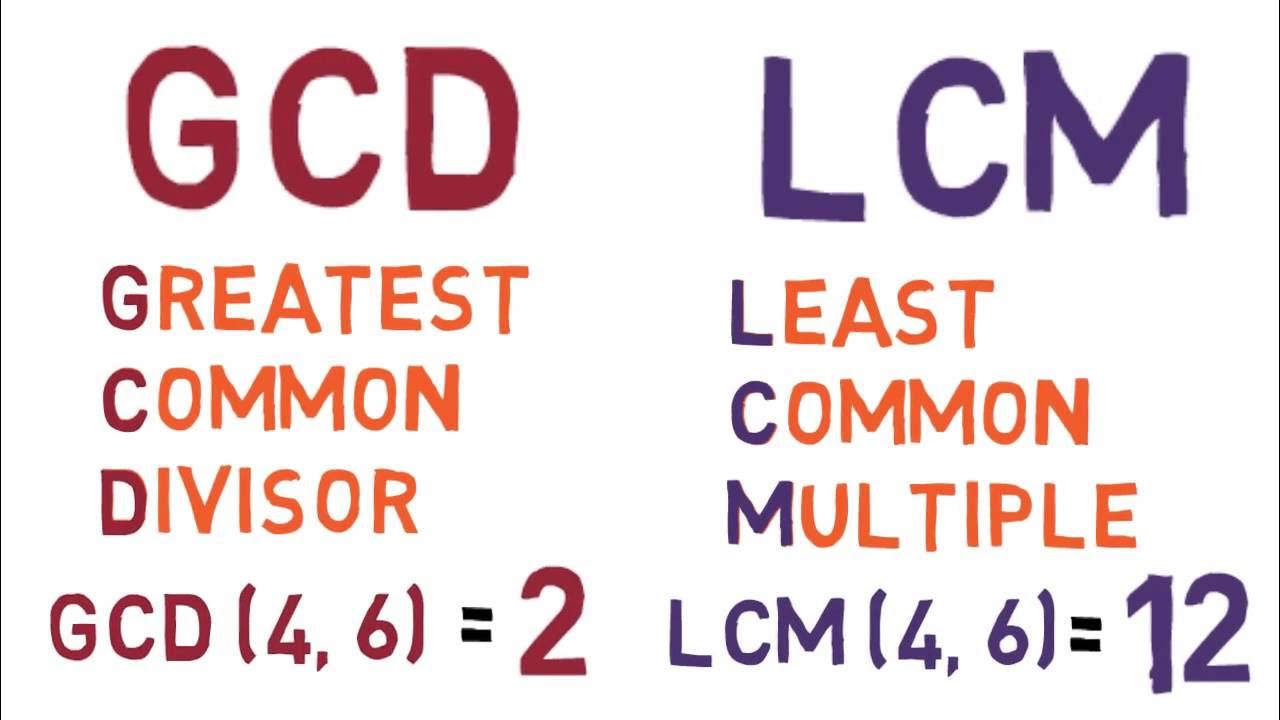Discrete Math - 4.3.2 Greatest Common Divisors and Least Common Multiples
Summary
TLDRThis video explores the concepts of Greatest Common Divisor (GCD) and Least Common Multiple (LCM), essential tools in number theory. It defines GCD as the largest integer that divides two given integers, illustrated through examples like 16 and 32, using both divisor lists and prime factorization. The video also explains LCM as the smallest integer divisible by both numbers, with examples including 8 and 14. Additionally, it introduces a formula for calculating LCM using GCD, setting the stage for future exploration of Euclid's algorithm for larger numbers.
Takeaways
- 😀 The greatest common divisor (GCD) is the largest integer that divides two given integers, A and B, both not equal to zero.
- 😀 A straightforward method to find the GCD is to list the divisors of both numbers and identify the largest common divisor.
- 😀 Using prime factorization is an efficient way to find the GCD by determining the highest power of common prime factors.
- 😀 The GCD of 12 and 30 can be calculated using their prime factorizations: 12 is 2^2 * 3 and 30 is 2^1 * 3 * 5, resulting in a GCD of 6.
- 😀 When two numbers are relatively prime, like 17 and 55, their GCD is 1, indicating they share no common factors.
- 😀 The least common multiple (LCM) is the smallest integer that both A and B divide evenly.
- 😀 To find the LCM, one can list multiples of each number until a common multiple is identified, or use their prime factorizations.
- 😀 The LCM of 8 and 14 can be found using prime factorization: 8 is 2^3 and 14 is 2^1 * 7, leading to an LCM of 56.
- 😀 An alternative method for finding the LCM is to multiply the two integers and divide by their GCD.
- 😀 The Euclidean algorithm is introduced as a systematic approach for finding the GCD of larger integers, to be explored in the next lesson.
Please replace the link and try again.
Outlines

This section is available to paid users only. Please upgrade to access this part.
Upgrade NowMindmap

This section is available to paid users only. Please upgrade to access this part.
Upgrade NowKeywords

This section is available to paid users only. Please upgrade to access this part.
Upgrade NowHighlights

This section is available to paid users only. Please upgrade to access this part.
Upgrade NowTranscripts

This section is available to paid users only. Please upgrade to access this part.
Upgrade NowBrowse More Related Video

Lesson 04 Comparing the GCD and the LCM - SimpleStep Learning

minimo comune multiplo (mcm) e Massimo Comun Divisore (MCD): come calcolarli senza confonderli

C programming Bangla Tutorial 5.106 : GCD(গসাগু) ও LCM(লসাগু) নির্ণয়ের জন্য Algorithm, Flowchart, C

MMC E MDC - Qual UTILIZAR❓Matemática básica Prof. Gis/

NÃO ERRE MAIS MATEMÁTICA! TODO CONCURSEIRO DEVE SABER. PARTE 1 DE 2. PASSO A PASSO.

ATIVIDADE 01 - MATEMÁTICA - 7º ANO
5.0 / 5 (0 votes)